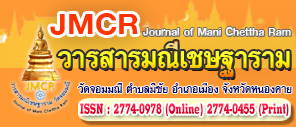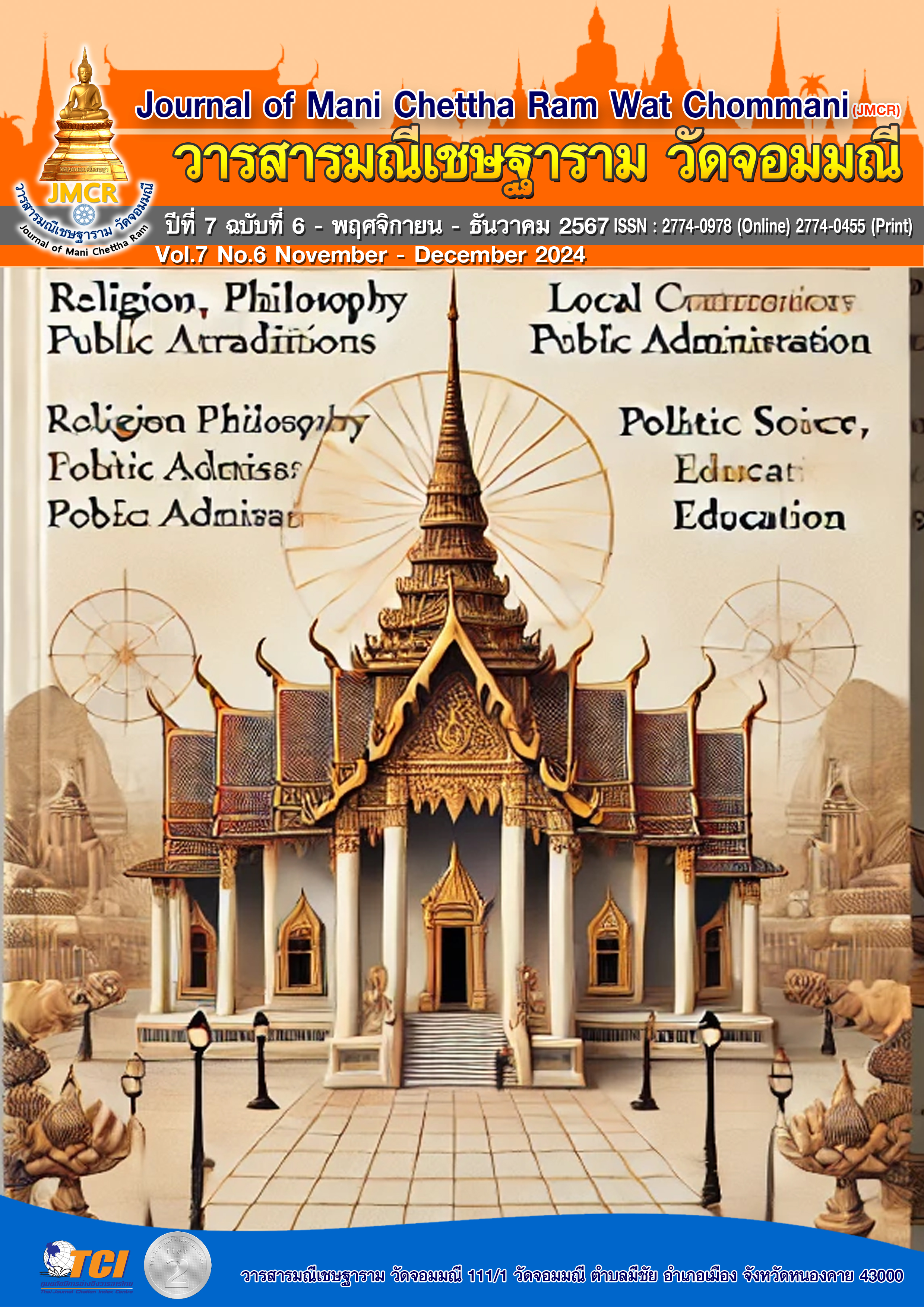THE OPERATIONAL EFFICIENCY OF A ZERO WASTE COMMUNITY: A CASE STUDY OF WANG SALA SUBDISTRICT MUNICIPALITY, THA MUANG DISTRICT, KANCHANABURI PROVINCE
Keywords:
Efficiency, Operation, Garbage-free communityAbstract
This research study aimed to 1) examine the methods and strategies for waste management, and 2) evaluate the effectiveness of waste-free community operations in the case study of Wang Sala Subdistrict Municipality, Tha Muang District, Kanchanaburi Province. The research population consisted of 1,054 people, with a sample group of 286 individuals. A questionnaire was used as the data collection tool, and the data was analyzed by presenting frequency distributions, percentages, mean values, and standard deviations.
The research results found that:
- The current waste management focuses on selecting materials or products that help reduce waste from the source by using the 3Rs principle (Reduce, Reuse, Recycle) in conjunction with 1A (Avoid), which aims to avoid using materials that generate waste. This helps reduce waste and its environmental impact through waste recycling, such as composting, waste sorting, and recycling.
- Regarding the operational factors, Wang Sala Subdistrict Municipality has a clear plan for the zero waste community project, with an average score = 4.49 and a standard deviation (S.D.) = 0.79. Regarding the community's participation in the project, the average score is = 4.12, with an S.D. = 1.25. In terms of waste management, the community was more organized after implementing the zero waste project, with an average score of = 4.40 and an S.D. = 0.87. For the public relations aspect, the people received information about the zero waste community project, with an average score of = 4.31 and an S.D. = 1.00.
References
กรมมลพิษ. (2565). รายงานสถานการณ์สถานที่กำจัดขยะมูลฝอยชุมชนของประเทศไทย. เรียกใช้เมื่อ 21 มิถุนายน 2567, จาก http:/dn.core website.com/public/dispatch_ upload/backend/core_dispatch_360892_1.pdf.
จำนงค์ อดิวัฒนสิทธิ์. (2563). การแบ่งลักษณะความสัมพันธ์ของคนในชุมชน. ใน วิทยานิพนธ์. สาขารัฐประศาสนศาสตรมหาบัณฑิต. มหาวิทยาลัยมหาจุฬาลงกรณ์.กรุงเทพมหานคร.
ธมันพร ฉันทพรม. (2561). ปัจจัยที่มีผลต่อประสิทธิภาพในการปฏิบัติงานของบุคลากรกรณีศึกษาสำนักพิกัดอัตราศุลกากร. จังหวัดกรุงเทพมหานคร. วารสารรามคำแหงฉบับรัฐประศาสนศาสตร์,1(2561/1) , 64-78.
วรรณวิไล แก้ววิไล. (2562). แนวทางการดำเนินงาน. มหาวิทยาลัยกรุงเทพ.วารสารบริหารธุรกิจ,32(1), 55-65.
นพดล โปธิตา. (2564). ประสิทธิภาพการจัดการขยะมูลฝอยด้วยเตาเผาขยะชุมชนขนาดเล็ก. วารสารสังคมศาสตร์และมนุษยวิทยาเชิงพุทธ, 6(8) , 507-509.
สำนักงานนโยบายและแผนทรัพยากรธรรมชาติและสิ่งแวดล้อม. (2567). สร้างความยั่งยืนด้านสิ่งแวดล้อมนำขยะเหลือทิ้งสู่พลังงานเชื้อเพลิงทดแทน. เรียกใช้เมื่อ 23 มิถุนายน 2567, จาก https://www.tsu.ac.th/home/details.php?aNum=20240201075023&id=3259&gid=2.
สุปรีญา นุ่นเกลี้ยง. (2563). แนวทางการเพิ่มประสิทธิภาพกระบวนการจัดการขยะอันตรายขององค์กรปกครองส่วนท้องถิ่น จังหวัดยะลา. เรียกใช้เมื่อ 7 กรกฏาคม 2567, จาก https://wb.yru.ac.th/xmlui/bitstream/hangle/yru/5180/supreeaya63.pdf?sequence=1&isAllowed=y.
สุวิทย์ แก้วเหล็ก. (2560). องค์ประกอบชุมชนและลักษณะของชุมชน. เรียกใช้เมื่อ 2 กรกฎคม 2567, จาก http://oservicce.skru.ac.th/ebookft/427/Chapter%203.pgf.
อุ่นเรือน ศิรินาค. (2560). การจัดการขยะมูลฝอยติดเชื้อในโรงพยาบาลเทพรัตน์นครราชสีมา. จังหวัดนครราชสีมา. วารสารวิจัยและพัฒนาด้านสุขภาพ, 4(2) , 40-51.
เทศบาลตำบลวังศาลา. (2567). เกี่ยวกับเทศบาลตำบลวังศาลาอำเภอท่าม่วงจังหวัดกาญจนบุรีเรียกใช้เมื่อ 2 กรกฎาคม 2567, จาก https://www.wangsala.go.th/about.
เยาวดี รางชัยกุลวิบูลย์ศรี. (2560). ความหมายของแนวคิดการดำเนินงาน. เรียกใช้เมื่อ กรกฎาคม 2567, จากhttp://research.otepc.go.th/files/8_% E0%B8%9A%E0%B8%97%E0%B8%97%E0%B8%B5%E0%B9%88%202_sjqi9b38.pdf.




